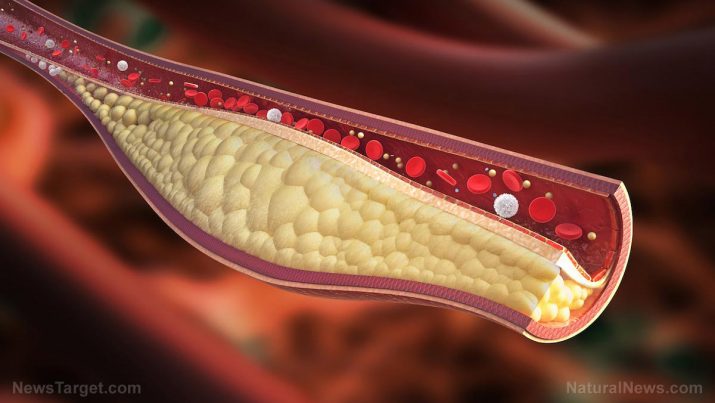
Cryoglobulinemia — causes, side effects and treatments at NaturalPedia.com
Thursday, February 22, 2018 by Janine Acero
http://www.naturalpedia.com/cryoglobulinemia-causes-side-effects-and-treatments-at-naturalpedia-com.html

Cryoglobulinemia is a disease caused by abnormal immunoglobulins called cryoglobulins in the blood. Cryoglobulins tend to clump together in colder temperatures, which cause blood plasma to become very thick. This can block normal blood flow to tissue and organs, which damages the blood vessels (vasculitis).
Cryoglobulinemia is characterized by rashes on the lower extremities, arthritis, weakness and neuropathy (nerve damage).
There are three main types of this condition. They are grouped based on the type of antibody that is produced:
- Type I
- Type II
- Type III
Type I is most often related to cancer of the blood, while Types II and III are most often associated with a chronic inflammatory condition, such as hepatitis C.
Other conditions that may be related to cryoglobulinemia include:
- Leukemia
- Multiple myeloma
- Primary macroglobulinemia
- Rheumatoid arthritis
- Systemic lupus erythematosus

Known symptoms of cryoglobulinemia
As cold temperatures play a role in cryoglobulinemia, people may experience flares during colder months. The most common symptoms of cryoglobulinemia are fatigue, joint pain, numbness or weakness, and a rash that looks like red spots or purple bruises (purpura), usually over the lower legs.
Symptoms will vary depending on the type of disorder you have and the organs that are involved. Symptoms and signs may include:
- Discoloration of hands and/or feet (from normal to white to a purplish-blue color), called the Raynaud phenomenon
- Weight loss
- High blood pressure
- Swelling of ankles and legs
- Skin ulcers and gangrene
- Enlarged liver or spleen
- Tingling or numbness
- Glomerulonephritis (inflammation of the kidneys)
- Breathing problems
- Muscle pain
Body systems harmed by cryoglobulinemia
Cryoglobulinemia damages the nerves and blood vessels. It may also cause cancer of the blood.
Food items or nutrients that may prevent cryoglobulinemia
Reduce inflammation and swelling of the joints by adding the following food items to your daily diet:
- Olive oil – Ditch the vegetable oil for some extra virgin olive oil. It’s rich in oleic acid, an omega-9 fatty acid that minimizes inflammation.
- Fish – Switch to fish that are rich in omega-3 fatty acids, such as salmon, snapper, tuna, cod, halibut, and bass, to help reduce inflammation and help you get your protein fix.
- Nuts – Almonds, hazelnuts, and walnuts are also high in omega-3 fatty acids.
- Herbs – Fresh herbs such as basil, thyme, and oregano are excellent sources of antioxidants, which accelerate healing. Curcumin and chili pepper are also good against inflammation and may reduce pain.
- Green tea – Perk up your hot or cold green tea with some lemon juice and you have an antioxidant-rich beverage.
- Dark chocolate – Chocolate that is at least 70 percent pure cocoa is also high in antioxidants.
To keep inflammation at bay, limit your alcohol intake and avoid processed foods that are often high in unhealthy fats, salts, and sugars, such as packaged meats, cookies, chips, and other snacks.
Treatments, management plans for cryoglobulinemia
Treatment and management of cryoglobulinemia often involve dealing with the severity of damage, underlying conditions, and prior therapies, with the aim of preventing further organ damage, reducing pain, and improving the patient’s overall quality of life.
For mild cases, patients are usually advised to avoid cold weather and environments. In more moderate to severe cases, a number of treatment options include:
- Corticosteroids like prednisone, which have been used to treat inflamed blood vessels.
- Plasmapheresis, which helps prevent blocked arteries and organ damage.
- Antiviral medications like ribavirin, which are used for cases associated with hepatitis C.
Where to learn more
- 2017 Research Shows Every Human Vaccine Is Contaminated With Inorganic Chemical Compounds – 44 Vaccines Tested
- Top doctors reveal that vaccines can trigger autoimmunity, turning our immune systems against us
- Research finds smoking tobacco causes inflammation throughout the body
- 20 Reasons Why The Flu Shot Is More Dangerous Than The Flu
- Gardasil genetic fingerprints found in postmortem samples of girls given vaccine
Summary
Cryoglobulinemia is a disease caused by an abundance of blood proteins called cryoglobulins, which tend to clump together in colder temperatures. This causes blood plasma to become very thick, blocking the blood flow to tissue and organs, which damages the blood vessels.
Cryoglobulinemia is characterized by rashes on the lower extremities, arthritis, weakness, and neuropathy.
Type I cryoglobulinemia is associated with cancer of the blood, while Types II and III are associated with chronic inflammatory conditions like hepatitis C.
Sources include:
Tagged Under: Tags: Cryoglobulinemia





